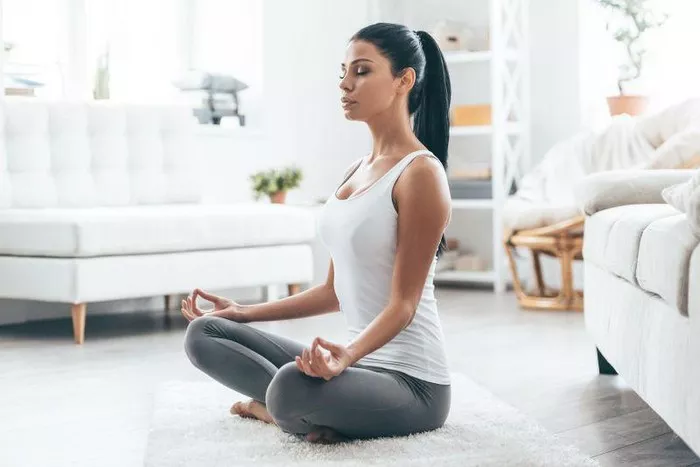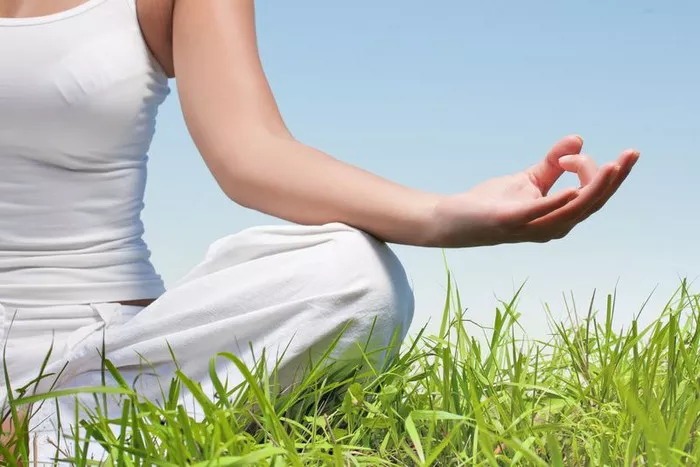Hatha yoga, a profound ancient practice, is more than just physical postures; it’s a holistic journey towards self-realization. Central to its framework are eight distinct stages, each contributing to the harmonious union of body, mind, and spirit. Let’s embark on a detailed exploration of these stages, peeling back the layers of this timeless tradition.
The Philosophical Foundation: Yamas and Niyamas
Yamas: Ethical Restraints
Yamas serve as the moral compass in the practice of Hatha yoga. They are universal ethical guidelines that encourage individuals to cultivate a harmonious relationship with the external world.
Ahimsa (Non-violence): At the core of yamas, ahimsa emphasizes refraining from causing harm, whether physical, verbal, or mental. In the context of yoga, it extends to self-compassion, treating the body gently during asana practice and avoiding pushing beyond one’s limits.
Satya (Truthfulness): This yama calls for honesty in thoughts, words, and actions. In the yoga journey, it means being truthful about one’s abilities and limitations, avoiding the temptation to compare oneself with others in the yoga studio.
Asteya (Non-stealing): Asteya isn’t just about refraining from theft in the literal sense. It also involves not taking credit for others’ work, not coveting what others have, and being content with one’s own journey in yoga.
Brahmacharya (Moderation): Often misinterpreted as celibacy, brahmacharya actually means channeling and conserving one’s energy. In yoga, it relates to moderation in all aspects of life, including diet, sleep, and sexual activity, to maintain a balanced state of energy.
Aparigraha (Non-possessiveness): Aparigraha encourages letting go of attachment to material possessions and emotional attachments. In the yoga practice, it helps practitioners detach from the outcome of their poses, focusing instead on the present moment.
Niyamas: Personal Observances
Niyamas are internal practices that focus on self-discipline and self-awareness, fostering a deeper connection with oneself.
Saucha (Purity): Saucha encompasses physical, mental, and emotional cleanliness. Physically, it involves maintaining personal hygiene and a clean living environment. Mentally, it means purifying the mind of negative thoughts through meditation and positive affirmations.
Santosha (Contentment): Santosha is about finding contentment in the present moment. In yoga, it helps practitioners appreciate their progress, no matter how small, and avoid the trap of constantly striving for more advanced poses.
Tapas (Self-discipline): Tapas represents the fire within, the commitment to self-improvement. In Hatha yoga, it translates into regular practice, even on days when motivation is low, and persevering through challenges in asana practice.
Svadhyaya (Self-study): Svadhyaya involves introspection and self-reflection. It can include studying yoga scriptures, but also simply observing one’s thoughts, emotions, and reactions during yoga practice and in daily life.
Ishvara Pranidhana (Surrender): Ishvara Pranidhana is about surrendering to a higher power, whether it’s a spiritual force, the universe, or the process of yoga itself. It helps practitioners let go of control and trust in the journey of self-discovery.
The Physical Gateway: Asanas
Asanas are the physical postures that most people associate with yoga. However, in Hatha yoga, they are much more than just exercise. Each asana is designed to stretch, strengthen, and align the body, while also calming the mind.
Standing Asanas: Postures like Tadasana (Mountain Pose), Virabhadrasana (Warrior Pose), and Trikonasana (Triangle Pose) are foundational standing asanas. They help improve balance, strengthen the legs and core, and open up the hips and shoulders.
Seated Asanas: Seated poses such as Padmasana (Lotus Pose), Ardha Matsyendrasana (Half Lord of the Fishes Pose), and Paschimottanasana (Seated Forward Bend) focus on stretching the spine, hamstrings, and hips. They also aid in digestion and promote mental focus.
Supine Asanas: Supine asanas like Savasana (Corpse Pose), SetuBandhasana (Bridge Pose), and Matsyasana (Fish Pose) are relaxing poses that counteract the effects of standing and seated postures. Savasana, in particular, is crucial for relaxation and integration of the physical practice.
Inversions: Inversions such as Adho Mukha Svanasana (Downward-Facing Dog), Viparita Karani (Legs-Up-the-Wall Pose), and Sarvangasana (Shoulder Stand) reverse the flow of blood, improve circulation, and stimulate the endocrine system. They also have a profound impact on reducing stress and anxiety.
Breath Control: Pranayama
Pranayama, the practice of breath control, is a vital stage in Hatha yoga. Prana refers to the life force energy, and pranayama helps regulate and enhance this energy.
Diaphragmatic Breathing: Also known as deep belly breathing, diaphragmatic breathing involves expanding the abdomen as you inhale and contracting it as you exhale. This type of breathing activates the parasympathetic nervous system, promoting relaxation.
Ujjayi Breath: Ujjayi breath is a technique where you constrict the back of the throat slightly while breathing, creating a soft, ocean-like sound. It helps calm the mind, warm the body, and improve focus during asana practice.
Nadi Shodhana (Alternate Nostril Breathing): Nadi Shodhana balances the left and right energy channels in the body, known as ida and pingala. By alternating the breath through each nostril, it brings about a sense of mental clarity and emotional stability.
Kapalabhati (Skull-Shining Breath): Kapalabhati is a more vigorous pranayama technique involving rapid, forceful exhalations through the nose. It cleanses the respiratory system, boosts energy levels, and improves digestion.
Sense Withdrawal: Pratyahara
Pratyahara is the stage where the practitioner withdraws the senses from external stimuli and turns inward. In a world filled with constant distractions, pratyahara allows for a deeper level of self-awareness.
Visual Withdrawal: During meditation or asana practice, closing the eyes or softening the gaze helps reduce visual distractions. This allows the mind to focus more easily on internal sensations.
Auditory Withdrawal: Paying less attention to external sounds and instead focusing on the breath or internal mantras is a form of auditory withdrawal. It helps quiet the mind and reduce mental chatter.
Tactile, Gustatory, and Olfactory Withdrawal: By being less reactive to touch, taste, and smell, practitioners can further detach from the external world. For example, during a yoga session, being aware of the physical sensations in the body without judgment, rather than being distracted by the smell of the studio or the texture of the mat.
Concentration: Dharana
Dharana is the stage of focused concentration. It involves fixing the mind on a single point, whether it’s the breath, a mantra, a candle flame, or a particular body part during asana practice.
Mindfulness of the Breath: Focusing on the inhale and exhale, noticing the rise and fall of the abdomen or the sensation of air entering and leaving the nostrils, is a common form of dharana. It helps train the mind to stay present.
Mantra Meditation: Repeating a sacred word or phrase, such as “Om,” can serve as a focal point for concentration. The sound and vibration of the mantra help calm the mind and bring it into a state of focused awareness.
Visualization: Visualizing a particular image, such as a peaceful landscape or a spiritual symbol, during meditation is another way to practice dharana. It engages the mind and helps develop the ability to maintain a single-pointed focus.
Meditation: Dhyana
Dhyana is the stage of deep meditation, where the mind becomes absorbed in the object of concentration. In dhyana, there is no longer a sense of the meditator, the act of meditation, and the object of meditation as separate entities; they merge into one.
Uninterrupted Focus: In dhyana, the mind remains focused on the chosen object without being distracted by thoughts, emotions, or external stimuli. It’s a state of deep absorption and inner peace.
Expansion of Awareness: As the practice of dhyana deepens, the awareness expands beyond the object of concentration. Practitioners may experience a sense of oneness with the universe, a profound understanding of their true nature.
Samadhi: Blissful Union
Samadhi is the ultimate goal of Hatha yoga, the state of blissful union with the divine or the true self. It’s a state beyond words, a profound experience of oneness and enlightenment.
Transcendent State: In samadhi, the practitioner transcends the limitations of the mind and ego. There is no sense of separation; everything is experienced as a unified whole.
Permanent Transformation: Although achieving samadhi is rare and often requires years of dedicated practice, even a glimpse of this state can bring about a permanent transformation in one’s perspective, values, and way of life.
Conclusion
The eight stages of Hatha yoga form a comprehensive path towards self-realization, physical well-being, and mental tranquility. Starting from the ethical and moral foundation of yamas and niyamas, progressing through the physical practice of asanas and the control of breath in pranayama, and culminating in the profound states of meditation and samadhi, each stage builds upon the previous one.

















